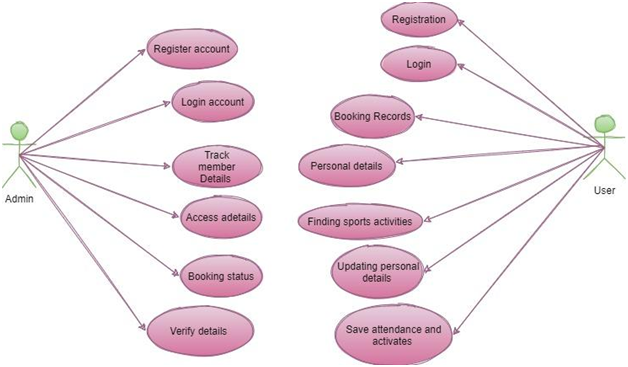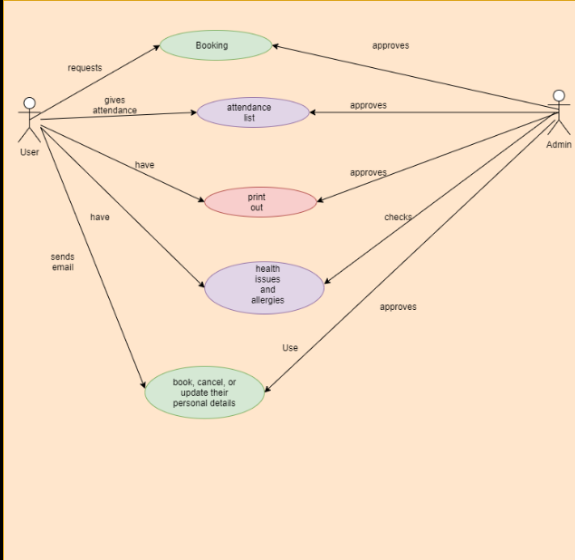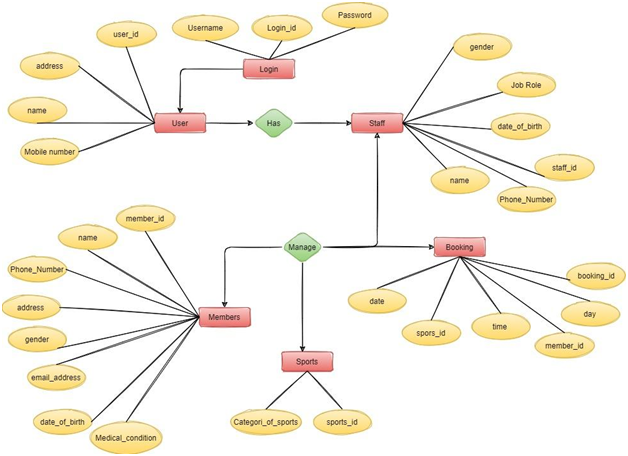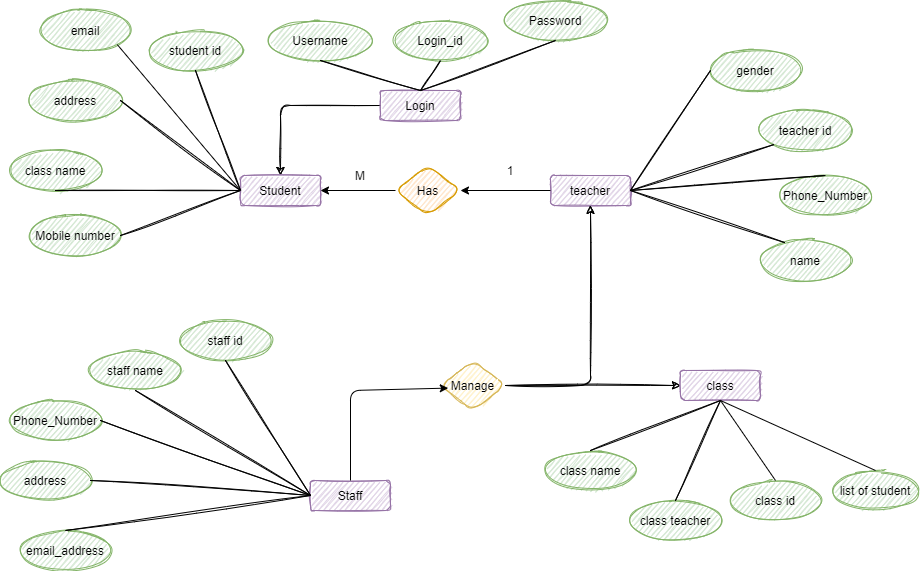CIS010-6 ASSIGNMENT SAMPLE – DATA MODELLING AND MANAGEMENT 2022
Question 1
- The use case diagram is a pictorial representation of a system. Use case models can describe how various types of stakeholders and users communicate with the system to solve various problems. Use case is one type of UML diagram which is very helpful to create the database of given problem statements. Use case diagrams describe the objective of user’s and also represent the interaction between the user’s and system.
Depending on this use case diagram, a database developer can understand the idea about the entire database table and the elements of the database table. There are various benefits or advantages available. The advantages of use case diagram are in the following-
- The main advantage of using use case diagrams is to take the functional requirement of the problem statement or system. That means it is very helpful to represent the functional requirements of a software system.
- The other advantage of use case diagrams is that use case diagrams are traceable. That means anyone can trace the use case diagram for understanding the software system.
- Use cases are very helpful to catch the behaviours of the software because this additional behaviour can improve the robustness of system software.
- Use case diagrams are very important for software developers. Because according to that diagram, a software developer can implement the software application.
- The estimating, validating effort, and scheduling can be served by the use case diagram. This is the other main benefit of use case diagrams.

b)Figure 1: Use case diagram of the sports management system
(Source: Self created)
This is the use case diagram of sports management system software. In this diagram it is seen that there are two stakeholders present in this system. The first is admin and the other one is users. The user can register their account to use this application. The next attribute is login. After taking the user id and password, the user can login to their account.
After that they can access all the property of the sport club management system application. They can also add their details and also view their personal details. The first is admin and the other one is users. The user can register their account to use this application. The next attribute is log in. After taking the user id and password, the user can log in to their account (Cek et al. 2020).
The above use case diagram contains two portals that are referred to as administrator and user. In the picture, it is seen that there are six main sections in the administration portal and as well as seven main sections in the user portal. In this Use case diagram scenario, the administration portal has the section named login details, register details, data access portal, member data tracking section and so on.
The admin can also register and login their account to use this application. The admin can also track the user details to and the user personal details for security purposes. The admin is the only administrator of this application. Based on this use case diagram a software developer can develop the application properly.

c)Figure 2: Use case diagram of the online booking system
(Source: Self-created)
Question 2

- Figure 3: Entity Relationship diagram of the sports management system
(Source: Self-created)
ER diagrams are too important to get a brief idea before going to design a database. An Entity Relationship Diagram or an ER diagram is another essential part of any project. The above picture describes an entity-relationship diagram scenario. It is also seen that all four parts have various attributes. The user portal has use_id, user_name, User-phone, and user_ address columns.
Like the user portal, the staff portal has few attributes like staff_id, staff_name, gender, the role of every kind of stuff, and contact. The Member portal and as well as the booking and sports portal have few various attributes which are seen in the above figure properly. The entity diagram contains the sports management system.
In the above diagram, it is seen clearly that there are two main portals as referred to as user and employees or the administration. All the two main portals contain a few sub portals like club members, sports, booking process and login process. Login Id, username, password are the attributes of the login portal.
There are seven attributes present in the club members portals (Chen and J, 2021). After completing an entity-relationship diagram, everyone can understand the foreign key and primary key of a database management system.

-
- Figure 4: Entity Relationship diagram of the student database
(Source: Self-created)
This is the entity relationship diagram for the given question. There are four stakeholders present in the picture.
Question 3
- a) SELECT row_1, row_2, row_3, …. FROM MEMBER;
OR SELECT * FROM MEMBER;
- b) CREATE TABLE MEMBER (Member ID int, FirstName varchar(50), Surname varchar(50), Address varchar(50), ContactEmail varchar(50), ContactNumber varchar(50), Current boolean(50) );
- c) “WHERE” is a very important and efficient clause in sql. This “WHERE” clause is used to indicate the condition when retrieving the data from a single table or by joining with the multiple table (Fattah et al. 2021). By using this “WHERE” clause, a developer can fetch some data from the database table.
SELECT ID, NAME, SALARY FROM CUSTOMER WHERE NAME = ‘AYON’
This is the sql queries where the “WHERE” clause is used. By using this, the ID, NAME, and SALARY of the customer table is selected where the customer name is “AYON”
- d) SELECT DISTINCT n_num from TEST order by (k_str);
This is the sql queries for distinct.
Question 4
- a) Normalisation is the process of organising and sequencing data gathering at databases so that data may be gathered, retrieved, or accessed according to the needs requested by the developers. The database is made up of tables for each user’s specific needs, as well as links to databases linked to the design pattern as specified.
It is critical for both data security and database flexibility, since it distinguishes between excess and incompatible dependencies. It is critical for both data security and database flexibility, since it distinguishes between excess and incompatible dependencies. The database is required since it is not deletable and stores all of the application data for the users.
It also includes unique capabilities such as the implementation of updation, insertion, change, drop, or delete of undesired rows. The normalisation can be classified into three different parts. These three parts are 1NF, 2NF and 3NF.
- 1NF or first Normal form
According to the criteria, the 1NF, or first normalisation form, is for a single valued property. It has an autonomous domain that does not change, as well as a unique name that makes it easier to recognise when a query is sent to the database.
| Title | Author | Auth or Nationality | For mat | Price | Subj ect | Pages | Thickness | Publisher | Publisher ntry | Publication Type | Gen re Nam e |
| Rot | Joe | UK | Book | 300 | Maths | 2260 | 1.8 | Mcgraw hill | US | Regular | xyz |
| Robert | Alex | GRE | Book | 400 | English | 2600 | 1.6 | Mcgraw hill | Asia | Regular | stu |
| Downey | Henry | England | Book | 290 | AI | 800 | 2.6 | Holy book | NewZealand | Promotional | xyz |
| Alfred O Nobel | Steven | AUS | Book | 150 | DBMS | 690 | 3.9 | Holy book | Austria | Promotional | xyz |
- 2NF or Second Normal form
It must have a parent key or be present at INF, and the lack of non prime attributes implies it is not reliant on any other subset of related candidate keys of the corresponding relation.
- 3NF or Third normal form
The 3NF, or third normal form, is a normalisation form having a link to the 2NF and no non-key attributes that are reliant on the primary key. It’s used to keep data from being duplicated. For a better relationship with the attributes, it mostly requires the primary attribute key exponential implementations.
Reference List
Journal
Chen, J., 2021. Exploring the relationship between Data Governance and Information Governance.
Fattah, A., Saragih, H., Rahman, T.K.A. and Setyadi, R., 2021. The Influence IT Governance Mechanism on Effectiveness ITG and IT Performance: A Partial Least Squares Structural Equation Modeling Approach (PLS-SEM). International Journal of Science, Technology & Management, 2(3), pp.568-581.
Cek, K. and Eyupoglu, S., 2020. Does environmental, social and governance performance influence economic performance?. Journal of Business Economics and Management, 21(4), pp.1165-1184.
Know more about UniqueSubmission’s other writing services:


Thank you for your sharing. I am worried that I lack creative ideas. It is your article that makes me full of hope. Thank you. But, I have a question, can you help me?
I don’t think the title of your article matches the content lol. Just kidding, mainly because I had some doubts after reading the article. https://accounts.binance.com/sl/register?ref=V2H9AFPY